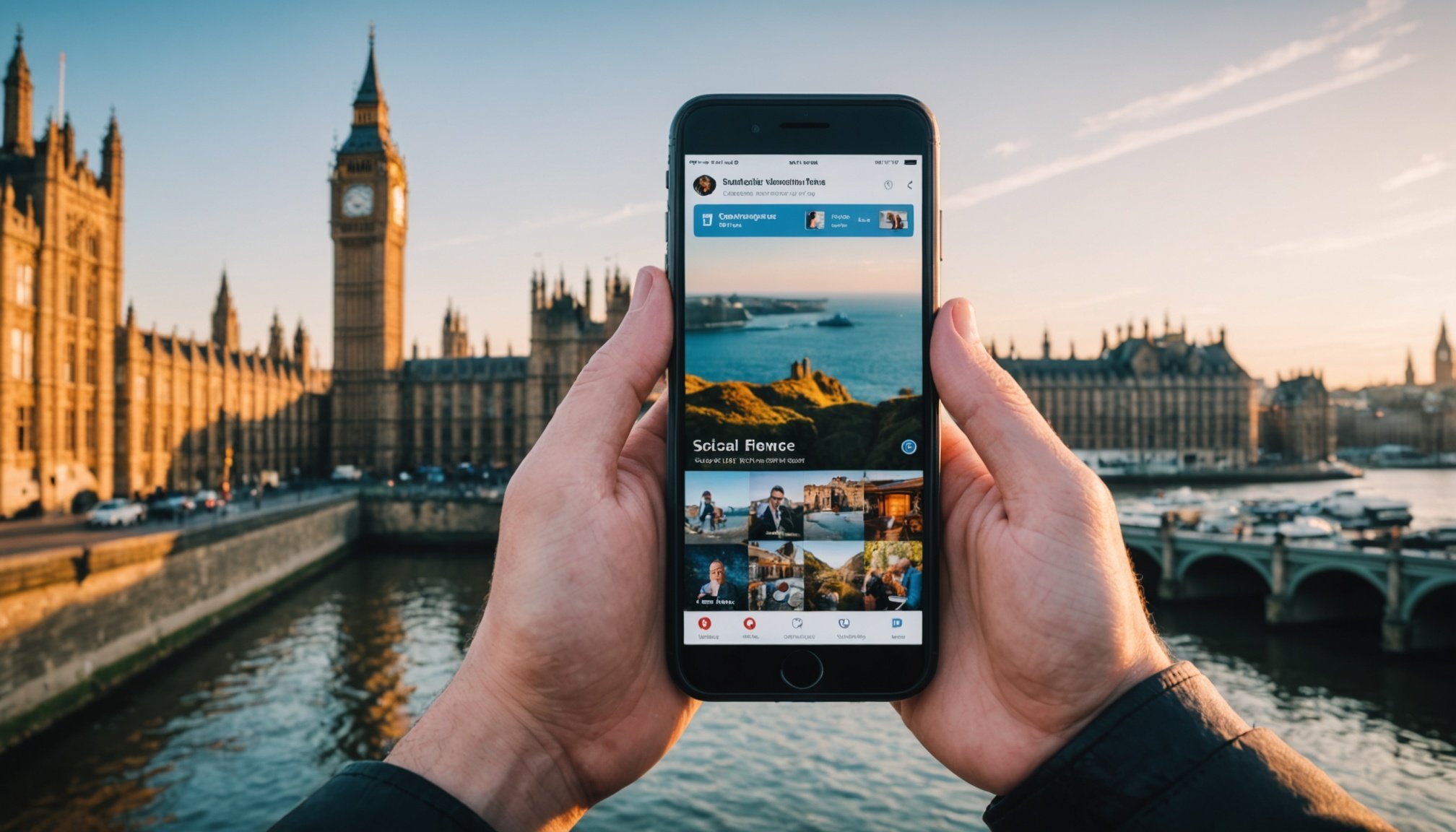Unlocking Potential: Innovative Tactics for UK Tourism Boards to Harness the Power of Social Media Influencers
In the ever-evolving landscape of tourism marketing, social media influencers have emerged as a pivotal force in shaping travel decisions and boosting destination visibility. For UK tourism boards, leveraging these influencers can be a game-changer, but it requires a strategic and creative approach. Here’s a deep dive into the innovative tactics that can help UK tourism boards unlock the full potential of social media influencers.
The Rise of Influencer Marketing in Tourism
In recent years, influencer marketing has become a cornerstone of tourism strategies globally. This shift is driven by the increasing trust consumers place in recommendations from influencers over traditional advertising. As noted by the Founder CEO of Acorn Tourism Consulting, “Influencers bring an authenticity and reach that traditional marketing often can’t match, especially in the digital age”[3].
Additional reading : Unlocking success: the ultimate compliance handbook for uk online advertising standards
Why Influencers Matter
- Trust and Authenticity: Influencers build trust with their followers through consistent and engaging content, making their recommendations more credible.
- Reach and Engagement: Influencers can reach a vast and targeted audience, often resulting in higher engagement rates compared to traditional ads.
- Content Creation: Influencers produce high-quality, visually appealing content that can be repurposed by tourism boards to enhance their marketing efforts.
Crafting a Comprehensive Influencer Strategy
To effectively harness the power of social media influencers, UK tourism boards need to develop a comprehensive strategy that aligns with their overall marketing goals.
Identifying the Right Influencers
Choosing the right influencers is crucial. Here are some key considerations:
In the same genre : Empowering communities through digital literacy: effective strategies for uk libraries to boost engagement
- Relevance: Select influencers who have a focus on travel, tourism, or related niches.
- Reach and Engagement: Look for influencers with a significant following and high engagement rates.
- Authenticity: Ensure the influencers align with the values and brand image of the destination.
- Micro Influencers: Don’t overlook micro influencers, who often have highly engaged audiences and can provide more targeted reach.
| Criteria | Description |
|---|---|
| Relevance | Aligns with travel or tourism niche |
| Reach and Engagement | Significant following and high engagement rates |
| Authenticity | Aligns with destination values and brand image |
| Micro Influencers | Highly engaged audiences, targeted reach |
Building Partnerships
Building strong partnerships with influencers is essential for a successful campaign.
- Collaborative Content: Work with influencers to create content that showcases the destination in a unique and compelling way.
- Exclusive Experiences: Offer influencers exclusive experiences or access to unique attractions to generate buzz.
- Long-term Relationships: Foster long-term relationships with influencers to ensure consistent and authentic promotion.
Leveraging Social Media Platforms
Different social media platforms offer unique opportunities for engaging with potential travelers.
Instagram: Visual Storytelling
Instagram is a powerhouse for visual storytelling, making it ideal for travel marketing.
- High-Quality Visuals: Influencers can share stunning photos and videos of destinations.
- Stories and Reels: Utilize Instagram Stories and Reels to provide behind-the-scenes content and real-time updates.
- Hashtags and Challenges: Encourage influencers to use specific hashtags and participate in challenges to increase visibility.
For example, Airbnb excels on Instagram by showcasing beautiful properties and sharing stories of hosts and travelers, making their feed a mix of travel inspiration and personal stories[1].
Facebook: Targeted Advertising
Facebook offers sophisticated targeting options, making it a valuable platform for travel marketing.
- Targeted Ads: Use Facebook ads to target users based on interests, past behavior, and upcoming travel plans.
- User-Generated Content: Encourage influencers to share their experiences on Facebook, which can be repurposed by tourism boards.
Booking.com successfully uses Facebook ads to target users who have shown interest in traveling to specific destinations, leading to higher click-through rates and conversions[1].
Pinterest: Early-Stage Inspiration
Pinterest is a unique platform where users actively search for inspiration for future activities, including travel.
- Rich Pins: Use rich pins to provide extra details like pricing and availability directly in the pin.
- Boards and Collections: Create boards for different travel destinations filled with stunning photography and travel tips.
National Geographic Travel leverages Pinterest by creating boards for various travel destinations, inspiring wanderlust and directing users to their website for more information[1].
Integrating Technology and Data
The use of technology and data analytics is crucial in optimizing influencer marketing campaigns.
Artificial Intelligence
Artificial intelligence (AI) can help in identifying the most effective influencers and predicting the success of campaigns.
- Influencer Identification: AI tools can analyze social media data to identify influencers who best fit the campaign criteria.
- Performance Prediction: AI can predict the engagement and conversion rates of influencer content based on historical data.
Data Analytics
Data analytics plays a vital role in measuring the success of influencer campaigns and making data-driven decisions.
- Engagement Metrics: Track engagement metrics such as likes, comments, and shares to gauge the impact of influencer content.
- Conversion Tracking: Use tracking links and codes to measure the number of bookings or website visits generated from influencer campaigns.
Case Studies and Best Practices
Several tourism boards and travel companies have successfully harnessed the power of social media influencers. Here are some case studies and best practices:
Tourism New Zealand’s “If You Seek” Campaign
Tourism New Zealand’s 2024 “If You Seek” campaign is a prime example of how to effectively use social media influencers and user-generated content.
- Cross-Channel Approach: The campaign uses a cross-channel approach, including social media, travel content marketing, and user-generated content via the hashtag #IfYouSeekNZ.
- Off-Peak Promotion: The campaign focuses on promoting New Zealand as a year-round destination, highlighting experiences best suited to off-peak seasons[2].
Tourism Ireland’s “Wild Atlantic Way” Campaign
Tourism Ireland’s “Wild Atlantic Way” campaign celebrates the 10th anniversary of the iconic route and is another exemplary use of influencer marketing.
- Social Media Takeover: The campaign includes a social media takeover, targeted video and digital campaigns, and a global PR push.
- User-Generated Content: Past visitors are encouraged to share their memories on social media with the hashtags #FillYourHeartWithIreland and #LoveIreland[2].
Practical Insights and Actionable Advice
For UK tourism boards looking to implement an influencer marketing strategy, here are some practical insights and actionable advice:
Start Small and Scale Up
- Begin with a small group of influencers and scale up based on the success of the initial campaign.
- Monitor and adjust your strategy continuously to optimize results.
Focus on Authenticity
- Ensure that the influencers you partner with align with the authentic image and values of your destination.
- Encourage influencers to share their genuine experiences rather than scripted content.
Utilize User-Generated Content
- Encourage influencers and visitors to share their experiences using specific hashtags.
- Repurpose user-generated content across various marketing channels to build trust and authenticity.
Measure and Evaluate
- Use data analytics to track the performance of influencer campaigns.
- Adjust your strategy based on the data to ensure maximum ROI.
In the competitive world of tourism marketing, leveraging social media influencers can be a powerful strategy for UK tourism boards. By identifying the right influencers, building strong partnerships, leveraging the right social media platforms, and integrating technology and data, tourism boards can unlock the full potential of influencer marketing.
As the travel industry continues to evolve, staying ahead of the curve with innovative marketing strategies is crucial. By embracing the power of social media influencers, UK tourism boards can drive growth, enhance their reputation, and attract more visitors to their destinations.
In the words of a tourism industry expert, “The future of tourism marketing is not just about reaching people; it’s about creating meaningful connections and experiences that inspire travel decisions. Social media influencers are at the heart of this strategy, and when done right, they can be game-changers for any destination”[4].
By following these innovative tactics and best practices, UK tourism boards can harness the power of social media influencers to achieve significant growth and success in the ever-competitive travel industry.











